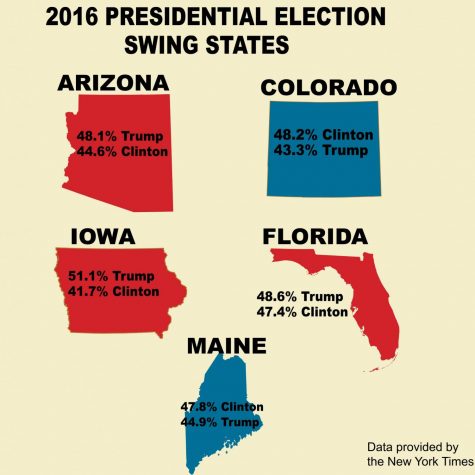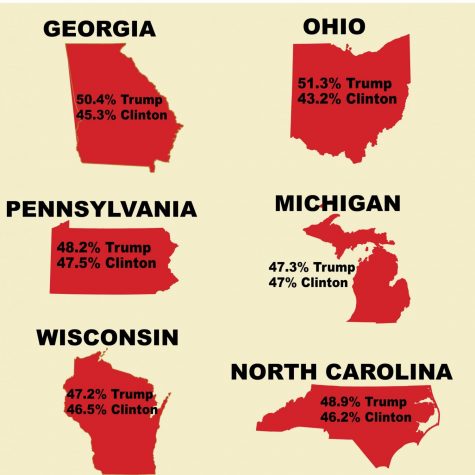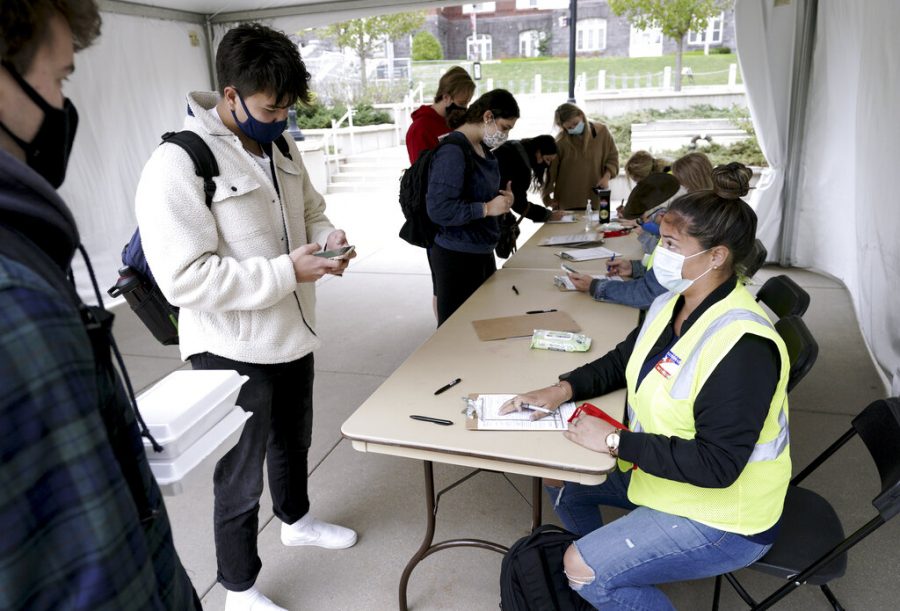As Election Day draws near, voters are keeping their eyes on polls for swing states. While states like Illinois and Wyoming can typically be depended on to be overwhelmingly “blue” or “red,” respectively, swing states are not as easy to predict.
For the 2020 Presidential Election, the following states have been identified as swing states, where candidates from the two major parties have similar levels of support among voters and the final vote count could go either way:
- Arizona
- Colorado
- Florida
- Georgia
- Iowa
- Maine
- Michigan
- North Carolina
- Ohio
- Pennsylvania
- Wisconsin
Sadie Fisher, a DePaul junior registered to vote in Wisconsin, predicts another close bid for the state following President Trump’s narrow win over Hillary Clinton in 2016.
“I think it will definitely be close,” she said. “A lot of more liberal-leaning stuff comes from the bigger cities, and the red votes come from more rural areas.”
Democratic candidate Joe Biden is currently leading in Wisconsin polls, amassing a total of 6.6 points over Trump. While Fisher is optimistic about the state turning blue, she remarked that “it’s really hard to say” what the numbers will look like come Election Day.
“I think it’s possible for [Biden] to win,” she said. “…A lot of the young vote, I think that will definitely help him win. I know a lot of people are kind of sick of Trump, so I know of a few Republicans [who are] voting for Biden.”

While Biden may have healthy leads in states like Wisconsin and Michigan, races in states like Iowa and Florida are currently much tighter.
Trump is currently leading in Ohio, which he previously won in 2016.
DePaul student Zoie Daughtery, who is registered to vote in Ohio, said that much of her community seems to prefer Trump over Biden.
“There are definitely a lot of Trump yard signs in my neighborhood,” she said. “I know that most people in my area are voting for Trump.”
Despite this, she imagines the state race will remain narrow due to new, younger voters — but still anticipates a second victory for Trump.
“I do think the race will be tighter because I think that a lot of younger people will be voting Biden,” she said. “However, I wouldn’t necessarily be surprised if it wasn’t a tight race… I think Trump will win Ohio.”
Ben Epstein, a political science professor at DePaul, said that voters can anticipate polls throughout the nation to narrow as the election approaches.

“Generally speaking, polling tightens in the two weeks, in the lead up to the election,” he said. “My prediction is that history would suggest that the polls are going to get closer as we get closer to the election.”
While Biden may be leading in a majority of swing states—as well as in national polls—Epstein advised against using polls as an absolute indication of a candidate’s potential success or failure.
“We should not assume that polling means victory,” he said. “Polling is not a prediction, polling is a snapshot…We can get a sense of who is who seems to be in a better position, and how much better or how close it actually is. But no matter what, anyone can win on Election Day.”




